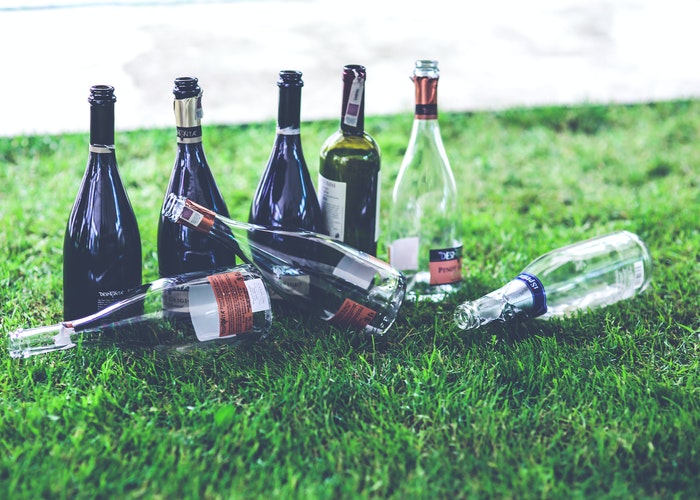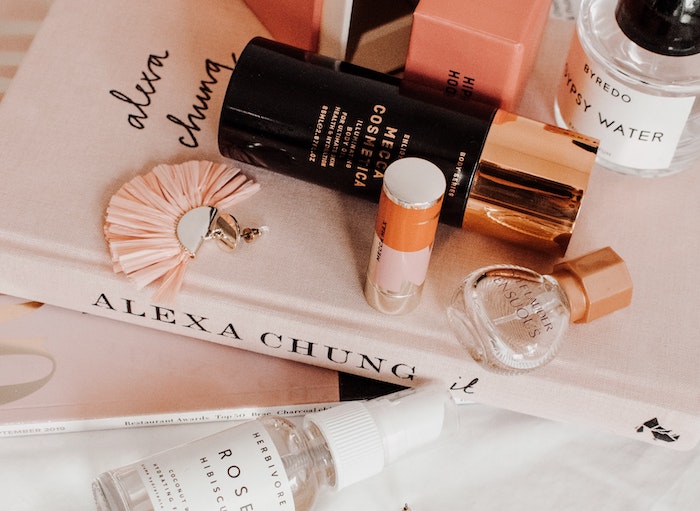5 Signs Your Quarantine Drinking Might Be Getting Out Of Hand — And How To Set Better Boundaries

Disclaimer: This piece deals heavily with the topic of alcohol abuse. Please only continue to read if you feel it is healthy for you to do so. This post was originally published on June 1, 2020.
Social media has been flooded with memes and jokes about drinking to cope with the stress and isolation of quarantine. Alcohol is everywhere–whether it is a Snapchat of someone’s “essential” liquor haul or homemade margaritas recipes on your Instagram feed. While alcohol itself isn’t new to our lives, the excessive alcohol usage referenced across social media isn’t something to take lightly, especially during this period of heightened stress.
According to data from global marketing research firm Nielsen, sales on alcohol more than doubled the week of March 21 compared to the year prior. Spirits, followed by beer, were the most popular drink purchases.
I get it — right now our lives can feel completely uprooted due to the pandemic, making it tempting to cope any way we can. On the other hand, that’s also a good reason to limit other things that can disrupt our lives. Alcohol can exacerbate issues like family fights or an inconsistent schedule that leaves you scrambling. It’s been shown to disrupt our circadian rhythm and REM sleep at a time when quality sleep is in short supply.
Ironically, the thing that may be driving so many of us to turn to alcohol — our heightened stressors — can also make those stressors worse. Coaching your child through a Zoom class, folding your laundry while talking on the phone, or prepping dinner while finishing a work project are all difficult tasks, but they can become more difficult and stressful with regular, long-term alcohol use.
How Much Is Too Much?
On the other hand, you don’t have to put away the wine or bourbon forever (unless you have an issue with alcohol abuse, then that’s a different story). While a “normal” amount to drink depends on some personal factors, “moderate” drinking is defined as “up to one drink per day for women and up to two drinks per day for men.” The guidelines note the importance of carefully watching mixed beverages for alcoholic content, though (I’ve recently learned the hard way that some boxed wines are much stronger than you may initially think).
The guidelines also state that “high-risk drinking is the consumption of four or more drinks on any day or eight or more drinks per week for women and five or more drinks on any day or 15 or more drinks per week for men. Binge drinking is the consumption within about two hours of four or more drinks for women and five or more drinks for men.” If you find yourself falling into these parameters during quarantine, particularly if you previously did not drink as much, it is worth looking at why and how your relationship with alcohol has changed.
Signs Your Drinking Might Be Getting Out Of Hand
While I should point out that we’re no experts, there are some red flags that people who actually are experts say you should be wary of when it comes to drinking:
- It’s affecting your relationships. “If you’re finding that your alcohol use is affecting your work, your school, your family relationships and that you keep drinking regardless of these issues, then you may have a real problem,” Linda Richter,Ph.D., director of policy research and analysis at the Center on Addiction told MensHealth.
- You drink to relieve stress. An occasional after-work drink is one thing, but if you’re depending on alcohol as stress reliever, that’s a red flag.
- You feel sick when you’re not drinking. If you’re getting sick more often or you don’t feel well on days when you’ve skipped alcohol, that could be a sign that you’re developing a dependency. The National Institute on Alcohol Abuse and Alcoholism reports that drinking too much at once can mess with your body’s ability to fight off infections.
- Your memory sucks. Heavy alcohol use can damage your memory function.
- You’re having trouble sleeping. As I mentioned, consistent alcohol use can mess with your circadian rhythms.
These are just a few signs your drinking might be getting the best of you — the Mayo Clinic has a more substantive list here.
How To Set Better Boundaries
If your alcohol consumption is getting in the way of life — affecting your relationships, slowing down your progress on personal goals, or interfering with your ability to perform your best at work, for example — then consider talking to a trusted resource (like the National Substance Abuse And Mental Health Helpline) or a professional.
But if you’re reading this article thinking hmmm, I might be drinking just a little too much, setting parameters around when and how you consume alcohol is a great first step towards limiting your intake so that your consumption does not get out of hand.
Personally, I’ve set a two-night drinking rule. I can drink any two nights of the week I choose. Usually, it’s Friday and Saturday, but sometimes a weeknight will slip in instead! I find that by limiting my alcohol consumption to specific days and capping myself at no more than two days a week, I am able to limit the overall impact of alcohol on my life. If you want to hear more about drinking in quarantine, I highly recommend listening to TFD founders Chelsea Fagan’s thoughts on this episode of The Financial Confessions.
Simplicity Bryan is deeply entrenched in the worlds of self-help, gratitude, personal finance, and organization. She’s happiest paddleboarding with her pup and storytelling with a purpose. You can follow her here.
Image via Pexels
Like this story? Follow The Financial Diet on Facebook, Instagram, and Twitter for daily tips and inspiration, and sign up for our email newsletter here.




